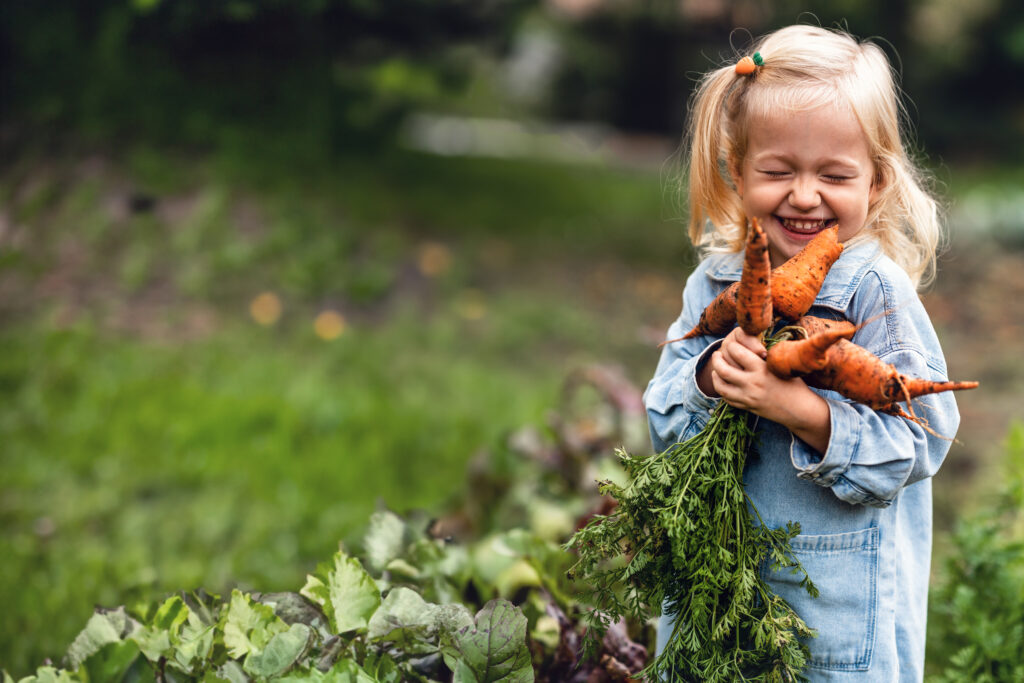A Parent’s Guide to Eco-Conscious Living: 3 Great Ways to Raise Green Kids🌱

Eco-conscious parenting isn’t about being perfect—it’s about making thoughtful choices that support a healthier planet while raising mindful, empathetic children.
From eco-conscious food choices to the way we play, our everyday actions shape not only our environment, but also our children’s lifelong habits. Recent research shows that early experiences, parental behavior, and outdoor time are powerful predictors of how children relate to the environment as adults. So what can parents do—and how can they do it?
Let’s look at three evidence-based strategies to nurture eco-conscious, sustainable habits, with hands-on suggestions to try at home.
1. 🌿 Start Early: Embed Eco-conscious Environmental Education into Daily Life
The Research:
A 2021 systematic review found that early childhood environmental education (ECEE) can significantly improve children’s environmental knowledge, emotional engagement, and even cognitive and social development (Zhang et al., 2021). Programs that were play-based and nature-oriented—rather than purely academic—had the strongest impact.
What You Can Do (and How):
- Nature Storytime: Read picture books that connect language learning with nature. Try The Earth Book by Todd Parr or Greta and the Giants by Zoë Tucker. For French learners, Les petits gestes pour la planète is a fun start.
- Eco-themed Crafts: Use recycled materials to create bird feeders, bug hotels, or mini gardens. Let your child decorate and name their projects in their second language.
- Green Routines: Turn everyday moments into teaching opportunities. Say things like, “We compost banana peels to help plants grow!” or “Let’s sort the recycling—where does this go?”
The key is to make learning hands-on and emotionally engaging. Keep it fun and age-appropriate—no guilt trips, just gentle guidance.
2. 👨👩👧👦 Model Eco-conscious Habits at Home
The Research:
Parental modeling is one of the strongest influences on children’s environmental behavior. A study by Grønhøj & Thøgersen (2017) showed that children mimic sustainable habits like recycling, turning off lights, or using less water when they consistently see their parents doing them. Even better? Children can influence parents too (Lawson et al., 2019).
What You Can Do (and How):
- “Green Jobs” Chart: Create a bilingual chore chart with eco-conscious activities like watering plants, turning off lights, or checking the compost bin. Make it fun and rewarding.
- Sustainable Swaps Together: Involve kids in choosing alternatives—like bringing a cloth bag instead of plastic, or picking reusable containers for snacks. Let them decorate their containers or bags!
- Talk it Through: Narrate your eco-conscious decisions: “I’m choosing these apples because they’re grown nearby—less travel means less pollution.”
The goal isn’t to be perfect—it’s to show your child that trying matters. Mistakes can become teachable moments, too.
3. 🌳 Get Outside: Let Nature Be the Teacher
The Research:
Outdoor time in childhood predicts greater environmental concern and sustainable behavior in adulthood. Evans et al. (2018) found that people who spent time outdoors as children—and had environmentally-minded parents—were significantly more likely to be eco-conscious adults.
What You Can Do (and How):
- Nature Walks with Purpose: Try “green scavenger hunts” where kids find items like “something green,” “a bird,” or “a bug home.” Introduce vocabulary in English and French/Spanish as you go.
- Mini Garden Projects: Grow herbs or flowers together—even a few pots on a windowsill count! Let kids water, talk to, and care for their plants regularly.
- Weather Observation: Use simple tools (or apps) to measure temperature or track cloud types. Say things like “Aujourd’hui, il fait chaud!” to integrate language learning with nature observation.
Nature time doesn’t have to mean going far. A backyard, local park, or even a balcony with bugs and plants offers opportunities for exploration.
References
- Evans, G. W., Otto, S., & Kaiser, F. G. (2018). Mothers’ education and environmental attitudes and behaviors, and children’s time spent outdoors predict environmental behavior in young adulthood. Children, Youth and Environments, 28(2), 38–63. Here
- Grønhøj, A., & Thøgersen, J. (2017). Why young people do things for the environment: The role of parenting for adolescents’ motivation to engage in pro-environmental behaviour. Journal of Environmental Psychology, 54, 11–19. Here
- Lawson, D. F., Stevenson, K. T., Peterson, M. N., Carrier, S. J., Strnad, R. L., & Seekamp, E. (2019). Children can foster climate change concern among their parents. Nature Climate Change, 9, 458–462. Here
- Zhang, Y., Soga, M., & Gaston, K. J. (2021). The impact of early childhood environmental education on children’s environmental attitudes and behaviors: A systematic review. Environmental Education Research, 27(1), 15–30. Here
🌟 For more engaging learning ideas, visit our blog weekly! We share creative activities, language tips, and more to make learning exciting. Stay connected with the latest posts on the Langmobile blog! And don’t forget to check out awesome songs on our Apple Music, YouTube, and Spotify pages to help with your language learning!

